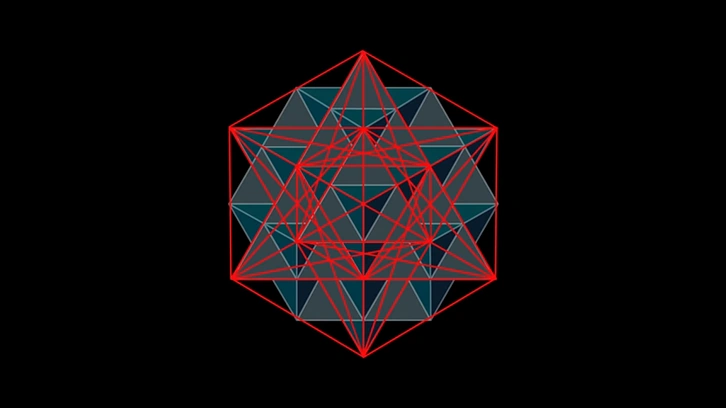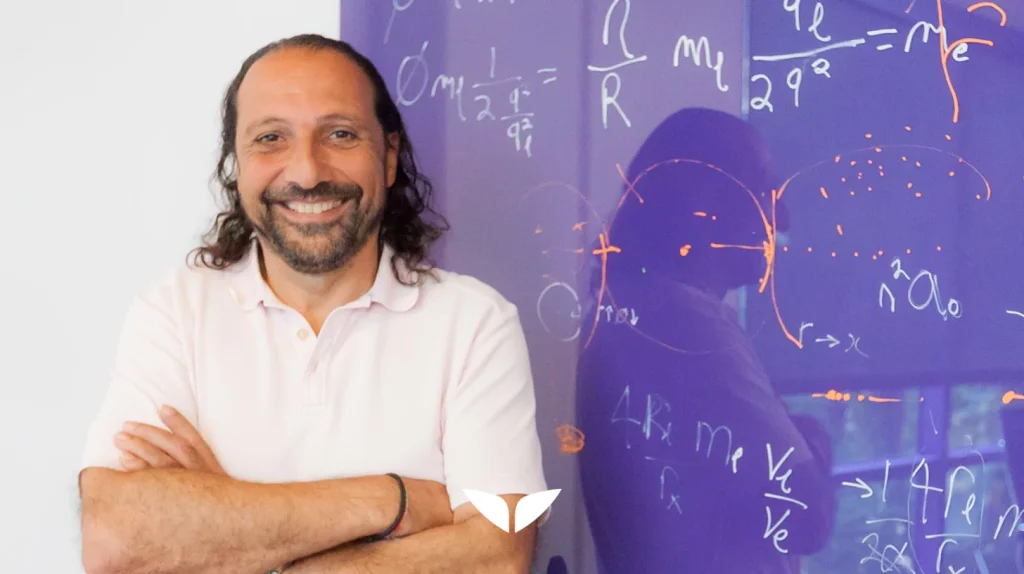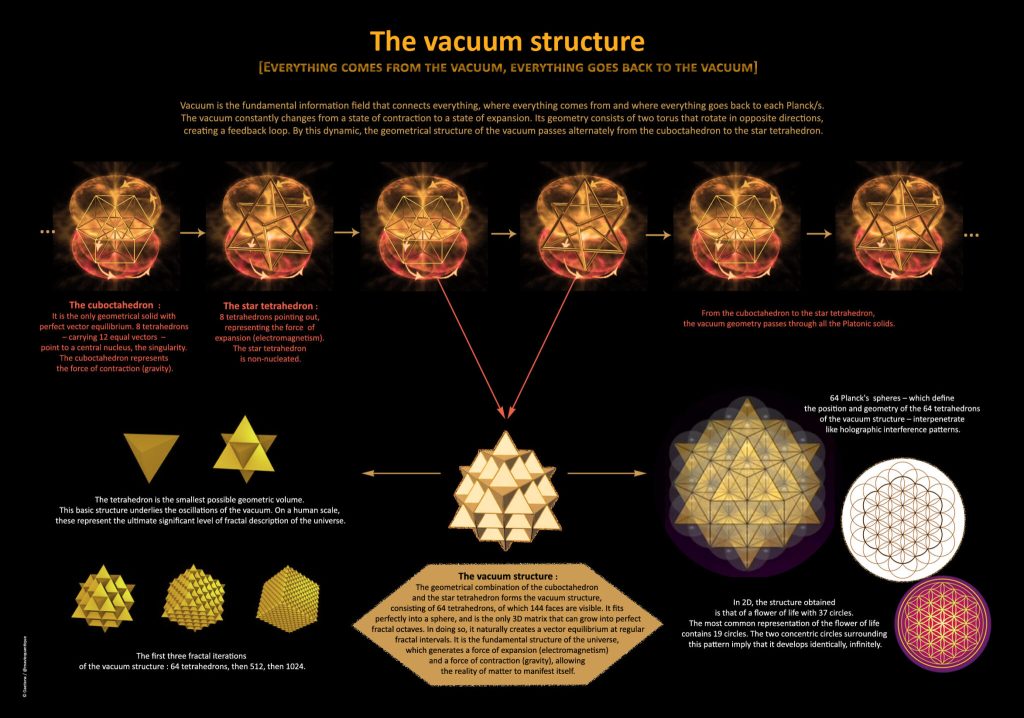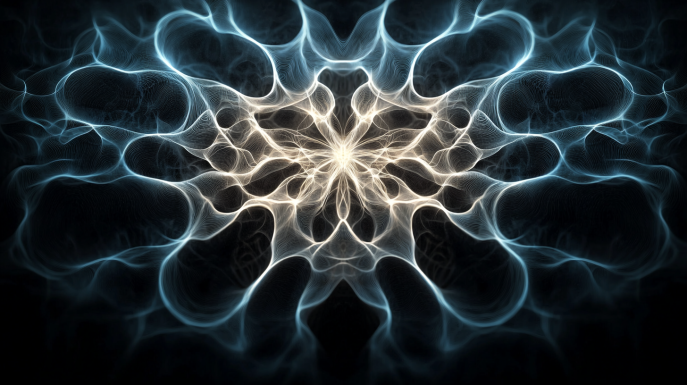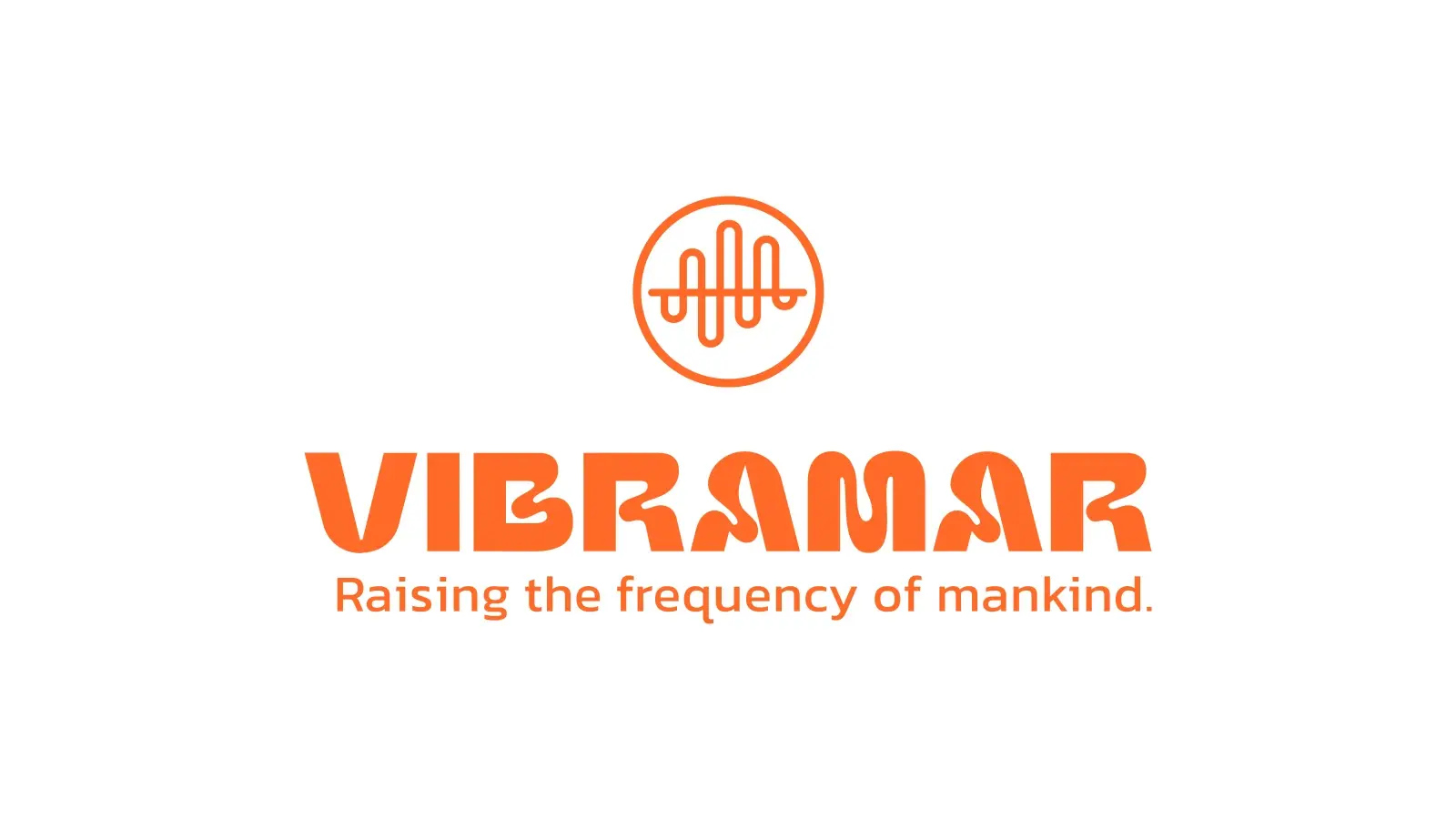Dr. Nassim Haramein has emerged as a controversial figure in the world of theoretical physics, proposing a radical unified field theory that seeks to bridge the gap between quantum mechanics, relativity, and consciousness. His work, while dismissed by many mainstream physicists as pseudoscience, has garnered a significant following among those seeking a more holistic understanding of the universe. This article explores Haramein’s theories, their implications, and the broader context of hyperdimensional physics.
Haramein’s Unified Field Theory
Haramein’s work is centered on the concept of a holofractographic universe. This theory posits that the universe is fundamentally holographic and fractal in nature, with patterns repeating at all scales, from the quantum to the cosmic. Haramein argues that this self-similar structure is key to understanding the unified nature of reality. The holofractographic model suggests that, like a hologram, each part of the universe contains information about the whole, creating a deeply interconnected and self-referential cosmos.
The cornerstone of Haramein’s unified field theory is the “Haramein-Rauscher Metric,” which he claims is a new solution to Einstein’s field equations. This metric purportedly incorporates torque and Coriolis effects, allowing for a more comprehensive description of space-time dynamics. While mainstream physicists have not accepted this metric, Haramein insists it provides a framework for unifying physics and consciousness. He argues that by including these rotational effects, the metric can account for phenomena that current models struggle to explain, such as the cohesion of galaxies, without the need for dark matter.
64-tetrahedron grid
Central to Haramein’s theory is the concept of geometric patterns in nature and the cosmos. He argues that specific geometries, particularly the tetrahedron, play a fundamental role in the structure of the universe. The “64-tetrahedron grid” is a key element of his theory, which proposes a fundamental structure permeating all of space. This grid, according to Haramein, forms the basis of what he calls “the structure of the vacuum” and is responsible for the manifestation of matter and energy in the universe.
Haramein also introduces the concept of Planck spherical units, which he suggests are the fundamental building blocks of the universe at the smallest scale. It is believed that these interconnected units form the fabric of space-time itself. In Haramein’s model, these Planck spherical units are not just abstract mathematical constructs but actual physical entities that make up the quantum foam of space-time.
Quantum Vacuum and Space-Time
Haramein’s work intersects with ongoing research into quantum vacuum fluctuations and their implications for our understanding of space-time. Recent studies have shown that manipulating these fluctuations could potentially lead to advancements in quantum technologies and ultra-precise field sensing. The quantum vacuum, once thought to be empty space, is now understood to be a seething cauldron of virtual particles popping in and out of existence.
Quantum fluctuations heavily influence the geometry and topology of space-time, especially in extreme conditions like those found in the early universe or near black holes. Haramein’s theories attempt to describe how these fluctuations relate to the structure of space-time at all scales, from subatomic particles to cosmic structures. He proposes that the fabric of space-time is not smooth but has a granular structure at the Planck scale, which gives rise to the observed properties of matter and energy.
Haramein’s ideas have gained some traction in addressing the proton spin crisis. The source of a proton’s spin, which its constituent quarks and gluons cannot fully account for, is a longstanding puzzle in particle physics. Haramein suggests that the structure of the quantum vacuum plays a crucial role in resolving this discrepancy. He proposes that the proton is actually a miniature black hole, with properties that emerge from the dynamics of space-time itself rather than solely from its constituent particles.
The concept of vacuum energy density is central to quantum field theory and plays a significant role in Haramein’s work. He proposes that this energy is not just a background phenomenon but an active participant in the dynamics of the universe. This idea has implications for understanding dark energy and the accelerating expansion of the universe.
Consciousness and Universal Connectivity
Haramein’s assertion that consciousness fundamentally connects to the physical structure of the universe is perhaps the most controversial aspect of his work. He proposes a fractal-holographic model of consciousness, suggesting that individual consciousness is a unique expression of a universal consciousness, much like how each part of a hologram contains information about the whole. This model implies that consciousness is not merely an emergent property of complex neural networks but a fundamental aspect of the universe itself.
This idea intersects with research into quantum entanglement and non-locality in brain function. Some researchers have proposed that quantum effects within neural networks may play a role in consciousness, allowing for non-local information processing and storage. Haramein takes this further, suggesting that the brain acts as a transceiver, interfacing with the quantum field of universal consciousness.
Haramein’s theories also touch on the concept of scaling laws in biological systems, suggesting that the same principles governing physical systems apply to biological and cognitive processes. Observations of fractal patterns in various biological structures and processes, from the branching of blood vessels to the firing patterns of neurons, support this idea.
The concept of memory of space-time and akashic field connections is another intriguing aspect of Haramein’s work. Haramein suggests that the universe not only retains information, but also stores it within the fabric of space-time, which some traditions refer to as the akashic records. Certain interpretations of quantum mechanics align with this idea, suggesting that the universe fundamentally conserves information.
The Resonance Project Foundation
To further his research and promote his ideas, Haramein founded the Resonance Project Foundation. This organization takes an interdisciplinary approach, attempting to unify physics, biology, and consciousness studies. The foundation’s work has implications for new energy technologies and has led to the development of ARK crystal technology, which purportedly harnesses principles of resonance for various applications.
The foundation’s interdisciplinary research approach seeks to break down the barriers between traditional scientific disciplines, arguing that a holistic understanding of the universe requires insights from multiple fields. This approach has led to collaborations between physicists, biologists, consciousness researchers, and even artists and philosophers.
One of the key goals of the Resonance Project Foundation is the unification of physics, biology, and consciousness studies. Haramein argues that these fields are intimately connected, and that a true understanding of reality requires integrating insights from all of them. This unification, he claims, could lead to breakthroughs in fields ranging from medicine to energy production.
The foundation’s work has implications for new energy technologies, based on Haramein’s theories about the structure of space-time and vacuum energy. While these ideas remain highly speculative, they have inspired research into alternative energy sources that could potentially harness the energy of the quantum vacuum.
ARK crystal technology is one of the more tangible outputs of the foundation’s research. Resonance with the quantum vacuum allegedly allows these crystals to structure water and enhance its properties. Despite the disputed scientific basis, those seeking alternative approaches to health and wellbeing have shown interest in these crystals.
Extended Esoteric Connections
Haramein’s work often ventures into territory that many scientists consider fringe or pseudoscientific. He draws connections between his theories and various esoteric concepts, including:
1. Ancient civilizations and advanced knowledge: According to Haramein, ancient cultures possessed a sophisticated understanding of unified physics, as evidenced by their architecture and cosmological models. He points to structures like the Great Pyramid of Giza and ancient texts that seem to describe advanced concepts in physics and mathematics.
2. Crop circles and hyperdimensional geometry: He has proposed that some crop circle formations may encode complex geometric patterns reflecting higher-dimensional structures. This controversial idea suggests that crop circles could be messages from advanced civilizations or manifestations of higher-dimensional physics.
3. Psi phenomena and the paranormal: Haramein’s theories aim to establish a physical foundation for diverse paranormal occurrences, proposing that principles of quantum mechanics and non-locality could explain them. He argues that phenomena like telepathy and remote viewing could be manifestations of the interconnected nature of consciousness in the universe.
4. Extraterrestrial intelligence: He speculates that advanced civilizations may operate within dimensions beyond our current understanding, manipulating space-time in ways that seem impossible to our current physics. This idea ties into his theories about the multidimensional nature of reality and the potential for consciousness to transcend our familiar four-dimensional spacetime.
5. Sacred geometry: Haramein draws parallels between the geometric principles in his theories and the sacred geometry found in ancient architecture, suggesting a deep connection between these mathematical ratios and the fundamental structure of the universe. He argues that ancient builders may have understood these principles intuitively or through advanced knowledge passed down through esoteric traditions.
Multidimensional Models of Reality
Haramein’s work extends into multidimensional models of reality, incorporating concepts from various fields of study:
1. Hyperspatial topology of consciousness: This concept suggests that consciousness operates within a complex hyperdimensional framework, interacting with the physical universe through intricate semantic fields. It proposes that our conscious experience is just a slice of a much larger, multidimensional reality.
2. Multidimensional nature of awareness: Haramein contends that human consciousness functions as a part of a holographic information field, embedded within a larger universal structure. This perspective posits that awareness transcends local processes and interconnects with the entire cosmos.
3. Higher-dimensional models of reality: Drawing on concepts from string theory and M-theory, Haramein’s framework incorporates additional dimensions beyond the familiar four of spacetime. We propose these extra dimensions to explain fundamental forces and particles, and to provide a framework for understanding consciousness.
4. Quantum holographic information fields: This concept suggests that the universe stores information holographically, enabling instantaneous access to knowledge and experiences that surpass traditional physical constraints. It ties into the concept of the akashic field and suggests a deep interconnectedness of all information in the cosmos.
5. Torsion fields and subtle energies: Haramein’s work touches on the concept of torsion fields, theoretical constructs that describe the twisting and spinning of space-time. We propose that these fields contribute to the transmission of subtle energies and could elucidate various psi phenomena.
6. Coherent biological processes and biosolitons: This concept refers to coherent wave patterns within biological systems that facilitate communication and information processing at a cellular level. Haramein suggests that these processes are integral to the emergence of consciousness in biological systems.
Consciousness and interdimensional travel.
Haramein’s theories include speculative ideas about consciousness technology and the possibility of interdimensional travel. He suggests that an advanced understanding of the relationship between consciousness and the structure of space-time could lead to technologies that allow for manipulation of reality itself. This includes the possibility of time travel through consciousness, where the mind could potentially access different points in space-time.
Haramein’s work closely links the concept of interdimensional travel to his understanding of the multidimensional nature of reality. He proposes that by understanding and manipulating the fundamental geometry of space-time, it might be possible to move between different dimensions or parallel realities. While these ideas remain highly speculative, they have captured the imagination of many and inspired further research into the nature of consciousness and reality.
Explore the Hidden History of Humanity and Ancient Advanced Civilizations.
A recurring theme in Haramein’s work is the idea that humanity’s history may be far more complex and advanced than conventional archaeology and history suggest. He suggests that ancient civilizations might have possessed knowledge and technology that surpasses what we currently attribute to them. This includes an advanced understanding of physics, mathematics, and the nature of consciousness.
Haramein points to megalithic structures, ancient texts, and artifacts as evidence of this hidden history. He suggests that some ancient sites, such as Göbekli Tepe in Turkey, indicate a level of technological and astronomical knowledge that predates current estimates of human civilization. Although mainstream archaeology does not accept these ideas, they have sparked interest in reexamining ancient sites and artifacts through the lens of advanced scientific concepts.
Conclusion
Nassim Haramein’s work boldly unites disparate disciplines of research under a unified theoretical framework. He has inspired curiosity among those seeking a more holistic view of the world, although his theories are highly controversial and rejected by orthodox science.
We should be skeptical of Haramein’s views as we would any bold scientific suggestion. Despite exciting potential and links, most of his work needs scientific peer review and experimental validation. However, his theories on reality, consciousness, and the universe continue to spark debate.
In Haramein’s work, physics, consciousness studies, and esoteric knowledge blur scientific borders and push the bounds. Many of his ideas appear far-fetched, yet they challenge our beliefs about reality and open up new possibilities.
Haramein’s work may be supported or inspired by fresh findings as science advances. The quantum, cosmological, and neurobiological revolutions are showing us a weirder, more linked cosmos. Even absurd thoughts may contain truths that lead to fresh discoveries.
Haramein’s work may be valuable not because it is accepted by scientists but because it inspires new ways of thinking about reality. It advances the discussion about consciousness, the cosmos, and mankind by questioning paradigms and fostering multidisciplinary perspectives.
We must mix open-mindedness and critical skepticism as we investigate science and consciousness. Haramein’s hyperdimensional physics may not address all the questions, but it shows that our understanding of the cosmos is incomplete. Through daring ideas and diligent research, we continue to advance scientific understanding.
“From the smallest to the largest scales, the universal scaling law demonstrates the interconnectedness of everything in the universe. This fundamental principle of nature reveals the intrinsic relationship between all things and provides a framework for understanding consciousness as an integral part of the fabric of space-time itself.”
– Nassim Haramein, from his paper “Scale Unification: A Universal Scaling Law for Organized Matter” (2008)
Source: Haramein, N., Hyson, M., & Rauscher, E. A. (2008). Scale Unification: A Universal Scaling Law for Organized Matter. We held the Unified Theories Conference in Budapest, Hungary.

